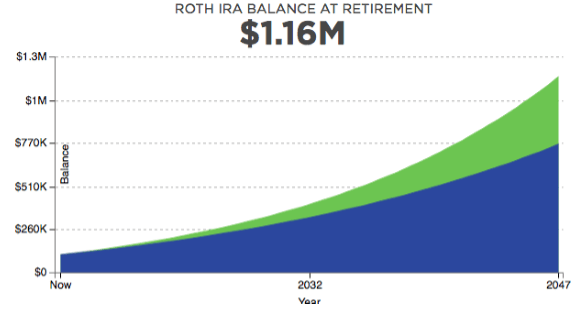
Budgeting is easy with the basic 50/20/30 principle. This simple rule can help you establish financial stability while setting the stage for future financial success. Experts recommend setting a budget and staying within it. No matter your budgeting style or your financial goals, knowing your cash flow is an important starting point.
Budgeting with the 50/20/30 rule
The 50/20/30 Rule is a simple budgeting method that allows you to save money and still enjoy life. This divides your expenses into three categories: your savings and your needs. Your needs represent the essential expenses you have to make, and your wants are any extras that you wish to have but do not necessarily need. Your savings should be used to save for the future or invest in retirement. Once you've identified where each category should go, you can adjust you budget accordingly.
This will allow you to save 20% on your income. It also helps you identify areas where you need to cut back. This will help you make your spending more efficient.

It takes the sting out of budgeting
A common way to reduce your spending is the 50/20/30 Rule. It divides your income in three categories: wants, needs, and savings. It's easy to feel that you can spend more on one area than the other, but it's important not to do this. The goal is to spend no more than half of your income on your necessities and leave the rest for the things that you love.
First, make a list. This list should include everything you need, including groceries, rents, utility bills, car payments, and insurance. Ask yourself if you could live without each item on the list. You can't live without electricity. This list may vary depending on your income and routine.
The 50/20/30 budgeting rule is a great way to budget. Because you don't need to keep track of every penny, it makes budgeting easier. You can even set up automatic transfers to help you pay off your debt more quickly.
It establishes financial stability
The financial budgeting technique of the 50/20/30 rule helps individuals to manage their after-tax income, and plan for the future. This rule recommends that you have a fund in place for unexpected expenses, such as job loss and medical emergencies. It also recommends regularly replenishing your emergency fund. While the 50/20/30 rule is ideal for many households, you should consider what your own financial situation requires.

The 50/20/30 rule is a proven savings and budgeting framework. It can help novice savers make good financial decisions. Although it is daunting, it gives you a solid structure to follow. By keeping your monthly expenses under 50%, you'll be better prepared to manage your income, allowing for flexibility.
Recognize yourself for small successes in building your financial stability. This will make you feel more secure and happy, which will encourage you to continue your work.
FAQ
What Are Some Benefits to Having a Financial Planner?
A financial plan will give you a roadmap to follow. You won’t be left guessing about what’s next.
It gives you peace of mind knowing that you have a plan in place to deal with unforeseen circumstances.
A financial plan will help you better manage your credit cards. A good understanding of your debts will help you know how much you owe, and what you can afford.
Protecting your assets will be a key part of your financial plan.
How old should I start wealth management?
Wealth Management can be best started when you're young enough not to feel overwhelmed by reality but still able to reap the benefits.
The earlier you start investing, the more you will make in your lifetime.
If you're planning on having children, you might also consider starting your journey early.
Waiting until later in life can lead to you living off savings for the remainder of your life.
How does wealth management work?
Wealth Management can be described as a partnership with an expert who helps you establish goals, assign resources, and track progress towards your goals.
Wealth managers are there to help you achieve your goals.
You can also avoid costly errors by using them.
How to Begin Your Search for A Wealth Management Service
When searching for a wealth management service, look for one that meets the following criteria:
-
Has a proven track record
-
Is the company based locally
-
Offers complimentary consultations
-
Continued support
-
Clear fee structure
-
Excellent reputation
-
It's easy to reach us
-
Offers 24/7 customer care
-
Offering a variety of products
-
Low fees
-
There are no hidden fees
-
Doesn't require large upfront deposits
-
A clear plan for your finances
-
Transparent approach to managing money
-
This makes it easy to ask questions
-
Has a strong understanding of your current situation
-
Learn about your goals and targets
-
Are you open to working with you frequently?
-
Works within your budget
-
A good knowledge of the local market
-
Is willing to provide advice on how to make changes to your portfolio
-
Is available to assist you in setting realistic expectations
What are the potential benefits of wealth management
Wealth management has the main advantage of allowing you to access financial services whenever you need them. It doesn't matter if you are in retirement or not. It's also an option if you need to save money for a rainy or uncertain day.
You can choose to invest your savings in different ways to get the most out of your money.
You could invest your money in bonds or shares to make interest. To increase your income, you could purchase property.
You can use a wealth manager to look after your money. You don't have the worry of making sure your investments stay safe.
Statistics
- According to Indeed, the average salary for a wealth manager in the United States in 2022 was $79,395.6 (investopedia.com)
- If you are working with a private firm owned by an advisor, any advisory fees (generally around 1%) would go to the advisor. (nerdwallet.com)
- According to a 2017 study, the average rate of return for real estate over a roughly 150-year period was around eight percent. (fortunebuilders.com)
- As previously mentioned, according to a 2017 study, stocks were found to be a highly successful investment, with the rate of return averaging around seven percent. (fortunebuilders.com)
External Links
How To
How to Invest your Savings to Make Money
Investing your savings into different types of investments such as stock market, mutual funds, bonds, real estate, commodities, gold, and other assets gives you an opportunity to generate returns on your capital. This is called investing. It is important that you understand that investing doesn't guarantee a profit. However, it can increase your chances of earning profits. There are many ways you can invest your savings. One of these options is buying stocks, Mutual Funds, Gold, Commodities, Real Estate, Bonds, Stocks, ETFs, Gold, Commodities, Real Estate, Bonds, Stocks, Real Estate, Bonds, and ETFs. These methods are described below:
Stock Market
The stock market is an excellent way to invest your savings. You can purchase shares of companies whose products or services you wouldn't otherwise buy. The stock market also provides diversification, which can help protect you against financial loss. If the price of oil falls dramatically, your shares can be sold and bought shares in another company.
Mutual Fund
A mutual fund refers to a group of individuals or institutions that invest in securities. They are professionally managed pools with equity, debt or hybrid securities. The mutual fund's investment objective is usually decided by its board.
Gold
The long-term value of gold has been demonstrated to be stable and it is often considered an economic safety net during times of uncertainty. Some countries also use it as a currency. The increased demand for gold from investors who want to protect themselves from inflation has caused the prices of gold to rise significantly over recent years. The supply and demand fundamentals determine the price of gold.
Real Estate
Real estate is land and buildings. Real estate is land and buildings that you own. You may rent out part of your house for additional income. You could use your home as collateral in a loan application. You may even use the home to secure tax benefits. You must take into account the following factors when buying any type of real property: condition, age and size.
Commodity
Commodities include raw materials like grains, metals, and agricultural commodities. These commodities are worth more than commodity-related investments. Investors who want the opportunity to profit from this trend should learn how to analyze charts, graphs, identify trends, determine the best entry points for their portfolios, and to interpret charts and graphs.
Bonds
BONDS can be used to make loans to corporations or governments. A bond is a loan where both parties agree to repay the principal at a certain date in exchange for interest payments. As interest rates fall, bond prices increase and vice versa. A bond is bought by an investor to earn interest and wait for the borrower's repayment of the principal.
Stocks
STOCKS INVOLVE SHARES OF OWNERSHIP IN A COMMUNITY. Shares only represent a fraction of the ownership in a business. If you have 100 shares of XYZ Corp. you are a shareholder and can vote on company matters. You also receive dividends when the company earns profits. Dividends are cash distributions to shareholders.
ETFs
An Exchange Traded Fund or ETF is a security, which tracks an index that includes stocks, bonds and currencies as well as commodities and other asset types. ETFs trade just like stocks on public stock exchanges, which is a departure from traditional mutual funds. The iShares Core S&P 500 (NYSEARCA - SPY) ETF is designed to track performance of Standard & Poor’s 500 Index. This means that if SPY is purchased, your portfolio will reflect the S&P 500 performance.
Venture Capital
Venture capital is private financing venture capitalists provide entrepreneurs to help them start new businesses. Venture capitalists provide financing to startups with little or no revenue and a high risk of failure. Venture capitalists typically invest in companies at early stages, like those that are just starting out.